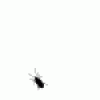Welcome guest, is this your first visit? Create Account now to join.
Welcome to the NZ Hunting and Shooting Forums.
Search Forums
User Tag List
+ Reply to Thread
Results 16 to 20 of 20
-
06-12-2022, 05:06 PM #16Member

- Join Date
- Jul 2012
- Location
- Invervegas
- Posts
- 5,717
-
-
06-12-2022, 05:11 PM #17Member

- Join Date
- Jul 2012
- Location
- Invervegas
- Posts
- 5,717
That's a very interesting thought. The CZ barrels are hammer forged though, and as far as I'm aware they are generally much more concentric than the likes of button and cut rifled barrels. A Lithgow LA102 308 I had with a barrel about the equivalent of a #4 (19mm at the muzzle was a good example of a hammer rifled barrel that could literally be run red hot without walking. Lots (but not all) of Tikka's likewise.
-
06-12-2022, 05:26 PM #18Member

- Join Date
- Jan 2015
- Location
- Wellington
- Posts
- 2,740
I have no idea about which brands are the least/most concentric. The likes of DPT who regularly circumcise rifles may be able to shed light on which manufacturers are most guilty of poor quality... (they may be reluctant to discuss this though!)
It does make sense that hammer forging is more consistent, as boring a hole length ways through a steel rod offers many opportunities to introduce error.
-
06-12-2022, 06:00 PM #19
If you shot very fast and thus the thinner side of the barrel heated up relative to the thicker side that would maybe work. But if you shot your 10 shot string more sedately the thick and thin sides would have time to share the heat evenly and stretch by the same amount.
I could imagine if military planners in WW1 found they had to use undesirable non-concentric barrel seconds, they would have arranged the thinner side at 12 o'clock. As a battle progressed and enemies closed in on each other, these rapidly heating rifles' POI would drop. Carnage could thus be executed with precision Victorian engineering, like a temperature-compensated railway clock.An itch ... is ... a desire to scratch
-
06-12-2022, 06:17 PM #20Member

- Join Date
- Jun 2013
- Location
- Middle Earth
- Posts
- 4,578
Similar Threads
-
What's considered "lightweight "
By SGR in forum Firearms, Optics and AccessoriesReplies: 63Last Post: 16-04-2020, 02:04 PM -
Howa (and possibly others) synthetic stocks "Walking"
By Tentman in forum Firearms, Optics and AccessoriesReplies: 10Last Post: 15-04-2019, 10:01 AM -
Shooting Apps "Range Buddy" and "Reloading Assistant"
By Dead is better in forum Resource LibraryReplies: 4Last Post: 14-01-2017, 05:23 PM -
Evolve LED Light Bar For Offroading in sizes 18",20",28",36",43"
By pighuntingnz in forum Outdoor TransportReplies: 4Last Post: 27-12-2016, 08:05 AM
Tags for this Thread
Welcome to NZ Hunting and Shooting Forums! We see you're new here, or arn't logged in. Create an account, and Login for full access including our FREE BUY and SELL section Register NOW!!





 18Likes
18Likes LinkBack URL
LinkBack URL About LinkBacks
About LinkBacks




 Reply With Quote
Reply With Quote


Bookmarks